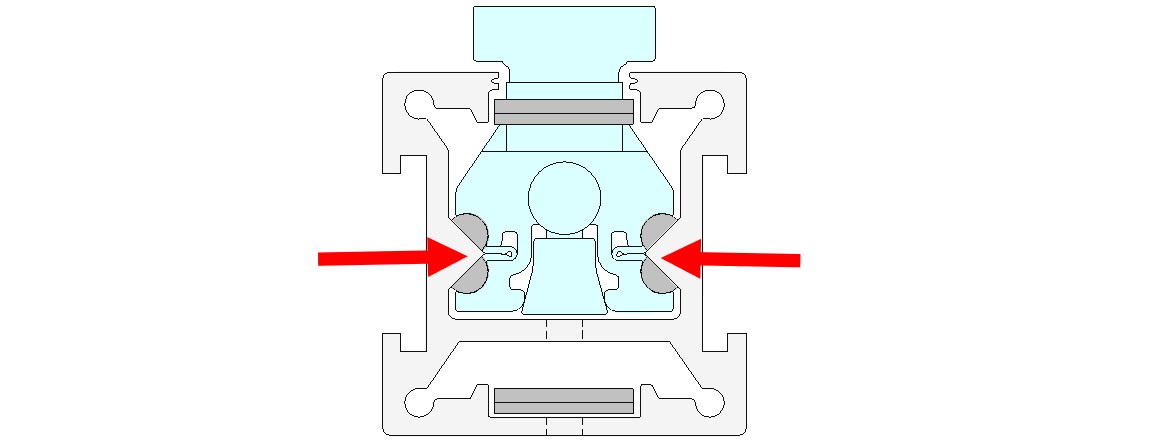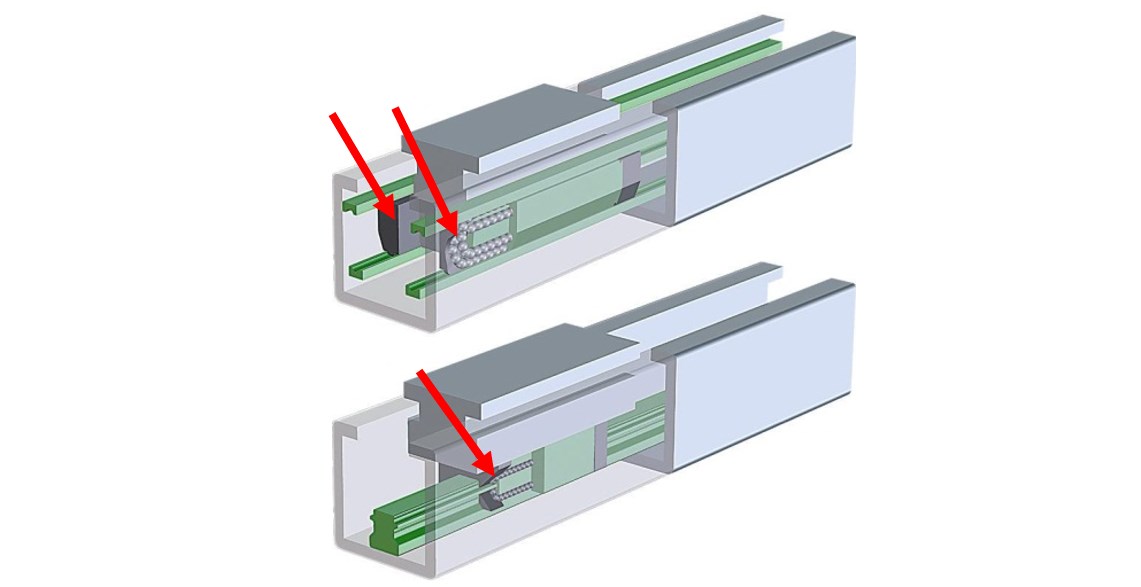Design and Theory
The three main types of guide designs for a linear system are:
- Prism guided
- Ball guided
- Wheel guided

Prism-Guided Cross Section
Prism guide units use engineered polymer guides.
Advantages:
- Extremely quiet operation
- Able to withstand high shock loads
- Operate in contaminated environments
Disadvantages:
- Slide guides have more friction, which will require more force to move the unit
- Lifetime based on wear
Design benefit is that the units have increased life in harsh environments with either contamination or shock loads. Cost savings over long lengths as prism guides run along the extrusion. No additional bearing costs for long lengths.

Ball-Guided Example
Ball guides use a recirculating ball design in the guiding system. The guides can be profile rail, round rail or an integrated recirculating ball system. The ball guides used can be a single rail or double rail.
Advantages of ball guided:
- High speeds - up to 5 m/s (with belt drive)
- High loads (38000 N)
- High moment loads (2760 Nm)
- Very low friction
- High stiffness

Wheel Guided Example
Wheel-guided units use small wheels on tracks, much like a train, to guide the carriage. Wheel-guided units are able to move at higher speeds than ball-guided units due to not having ball return paths.
Advantages:
- Very high speeds (up to 10 m/s, using belt drive).
- Low friction
- High stiffness
- Carriage has a wide footprint, which provides a higher moment loading resistance


